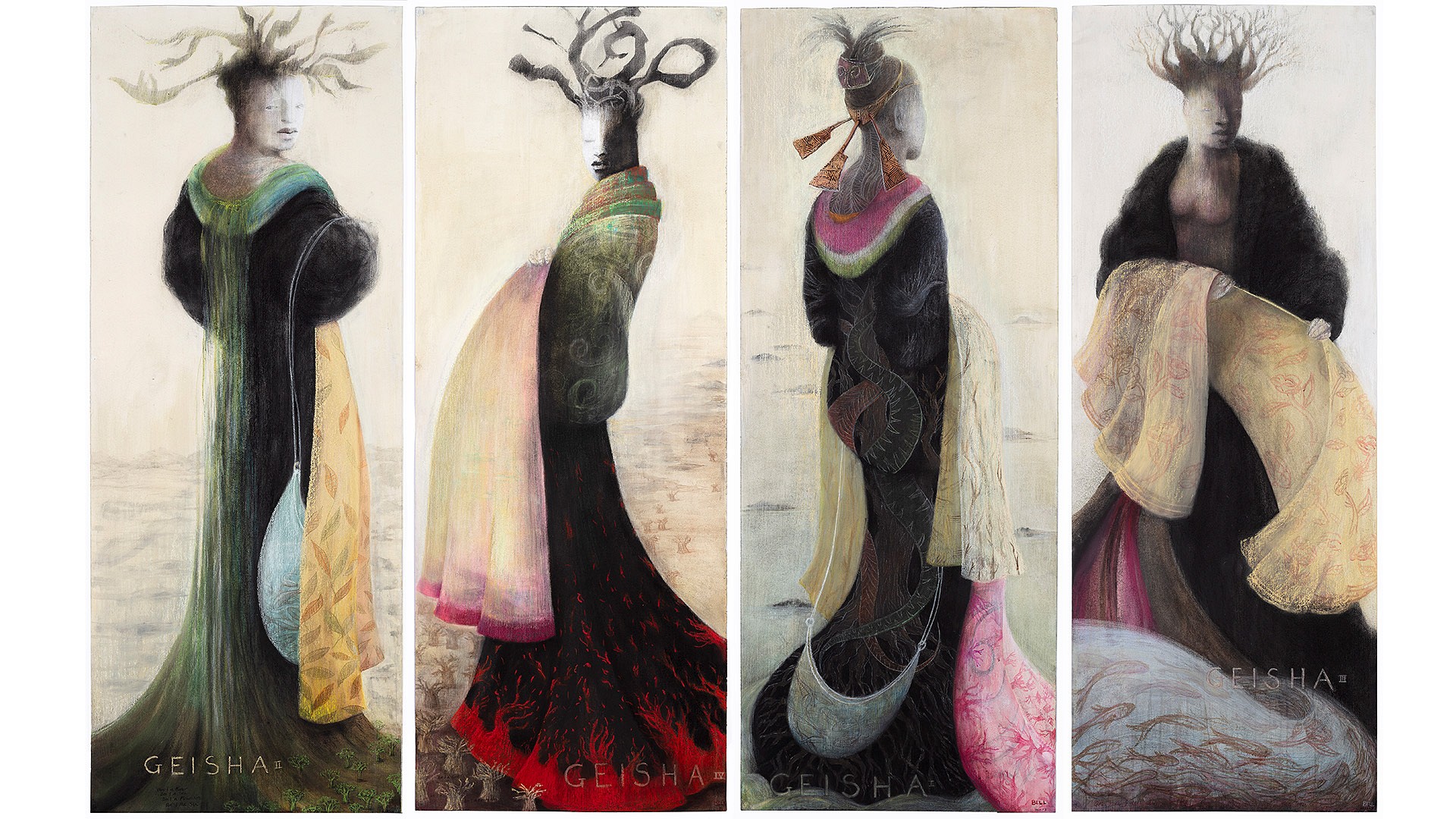PRESS RELEASE

DEBORAH BELL - Mother Land
Feb 8 – Apr 6, 2024
Mother Land
‘Where I come from, it’s a long thin thread. Across an ocean, down a river of red.” Laurie Anderson
Over 12 000 kilometres, and a patchy Zoom call between Johannesburg and Waiheki Island off the Auckland coast, Deborah Bell describes her move from South Africa to live in New Zealand at the start of the Covid pandemic.
“I was very aware that I was flying from one of the most stable land masses to this oceanic outcrop. The shift from the solid to this watery world emerging from the sea really stuck with me. Plus, I’d travelled to what is basically the opposite side of the globe”, she says.
Three years on, and it’s impossible to consider Bell’s most recent mixed media works without taking this seismic relocation into account. They are, to a point, a visual account of this resettlement and the impact it has had on her life.
The sense of a journey is not a new one in Bell’s work. The movement between mortality and immortality and the earthly and spiritual realms, for example, recur in her work over decades. Likewise, as in the monumental Crossing I, Meditation Charioteer I & II, and Heiros Gamos sculptures, she portrays seekers of meaning as travellers on boats or chariots.
Now, the voyage she’s responding to is literal, but it’s also interlaced with a delving into her own history. It is a meditation on her own story, and bloodline.
Bell’s mother was a New Zealander who came to Southern Africa in early adulthood and established a life on the continent. Decades later, the daughter has returned to the land of her mother.
Majestic indigenous Pohutukawa trees, cliff faces dropping off into undulating water –references to Bell’s new home indicate New Zealand’s influence on her mind. But as she says, it’s the culture and ways of being that have impacted on her too. “There is a MÄori custom, Pepeha, in which you introduce yourself according to the mountain and river closest to where you come from”, she explains. “You also identify your tribe, your family name and even the canoe or waka on which you came to the island. When I first arrived, I introduced myself in this way, but used my artworks instead.” These included Crossing I, which featured a man and a dog in a canoe, and Debre (forgiveness), a monolithic mountain of a work.
“I’m constantly reminded of the line in Laurie Anderson’s song Speak my Language”, says Bell. In it the American musician says, ‘Where I come from, it’s a long thin thread – across an ocean, down a river of red’. It’s that sense of the journey down a river of red being my bloodline. I was crossing the ocean back to my mother.”
The works in Mother Land continue to allude to the broader sense of the ancient, archetypes, and recurring motifs that play on Bell’s mind. Those familiar with her work will recognise the sphinx, keys and red shoes revealing themselves again in these cotton paper pieces. The geisha is a new addition to this symbolic lexicon. Of this Bell says, “the trees hanging over cliffs plunging into cold water here, made me think of Japan. The geishas and connection to Japanese landscapes came from that, but they’re also juxtaposed with baobabs – a sign of my other home and ancient Africa.”
It's a poignant inclusion and one that hints at the fact that Bell is in flux between two worlds. “South Africa is my motherland, but New Zealand is the land of my mother. She was born there though lived a huge portion of her life in South Africa too”, she notes. “I need see whether maybe I can have a life in both places. Africa has a heartbeat. It's a doof, doof, doof, a sense of rhythm, a sense of love. I realise that in some way both these places are indelibly in my blood.”
For more information please contact monique@everard.co.za



